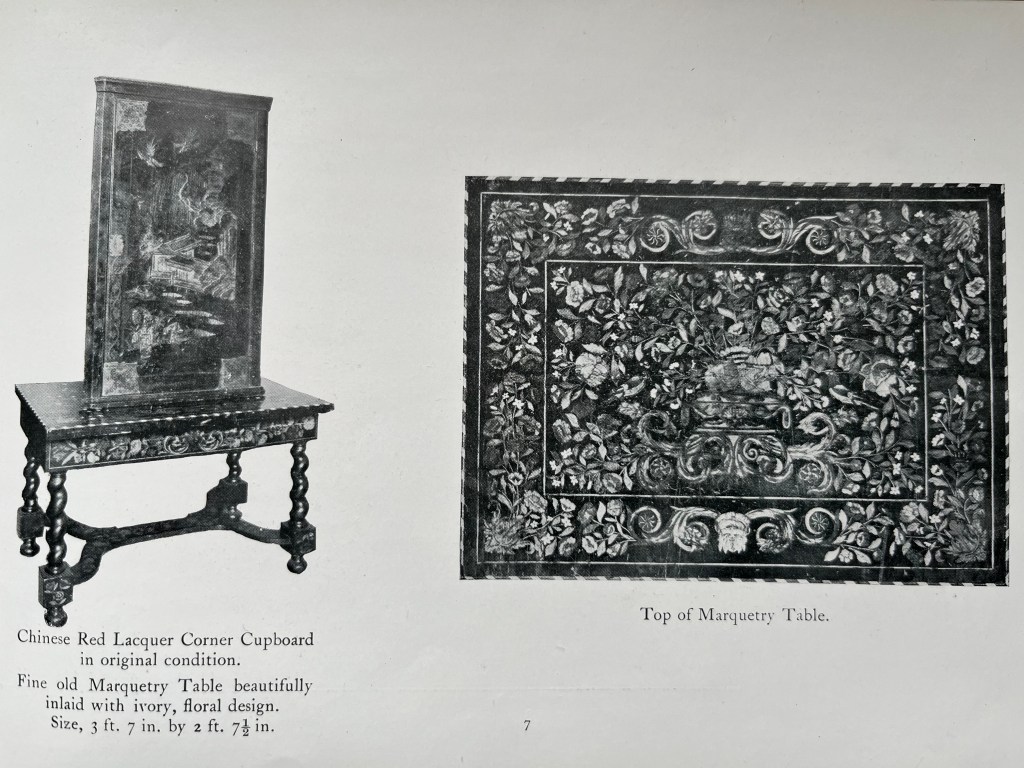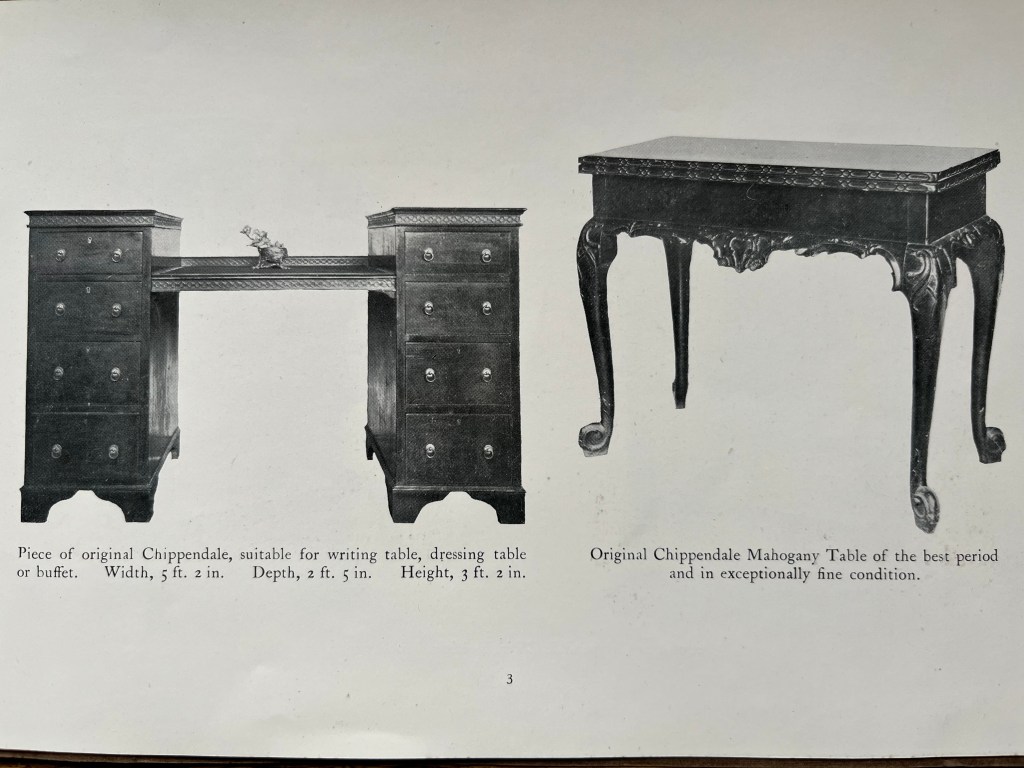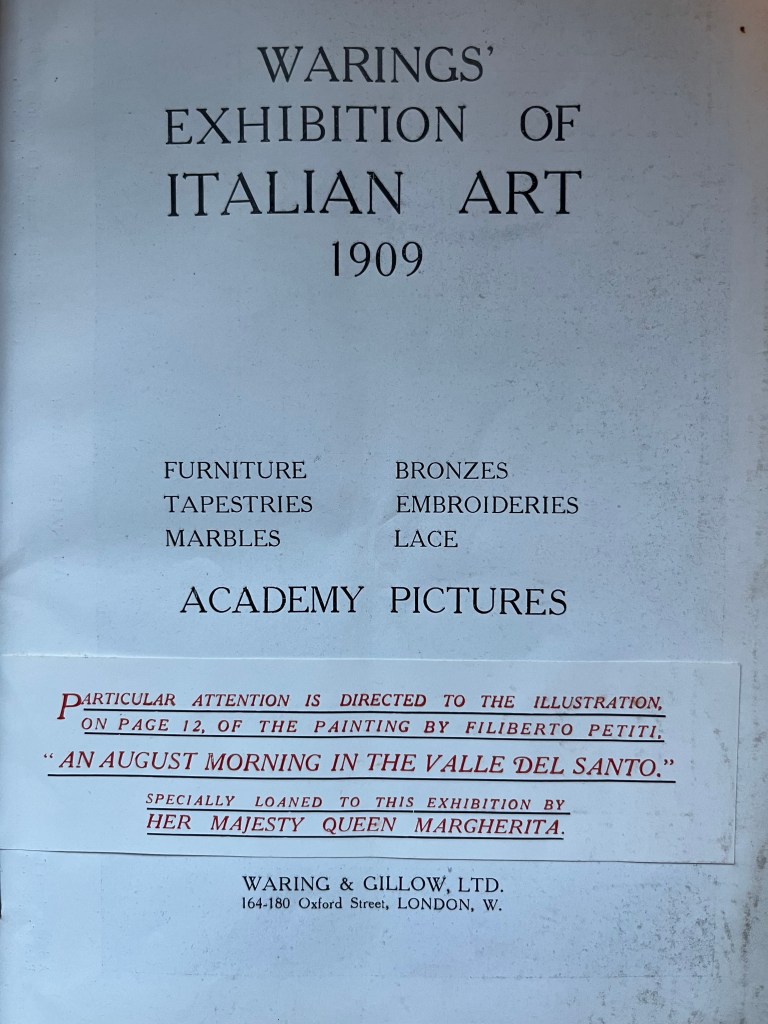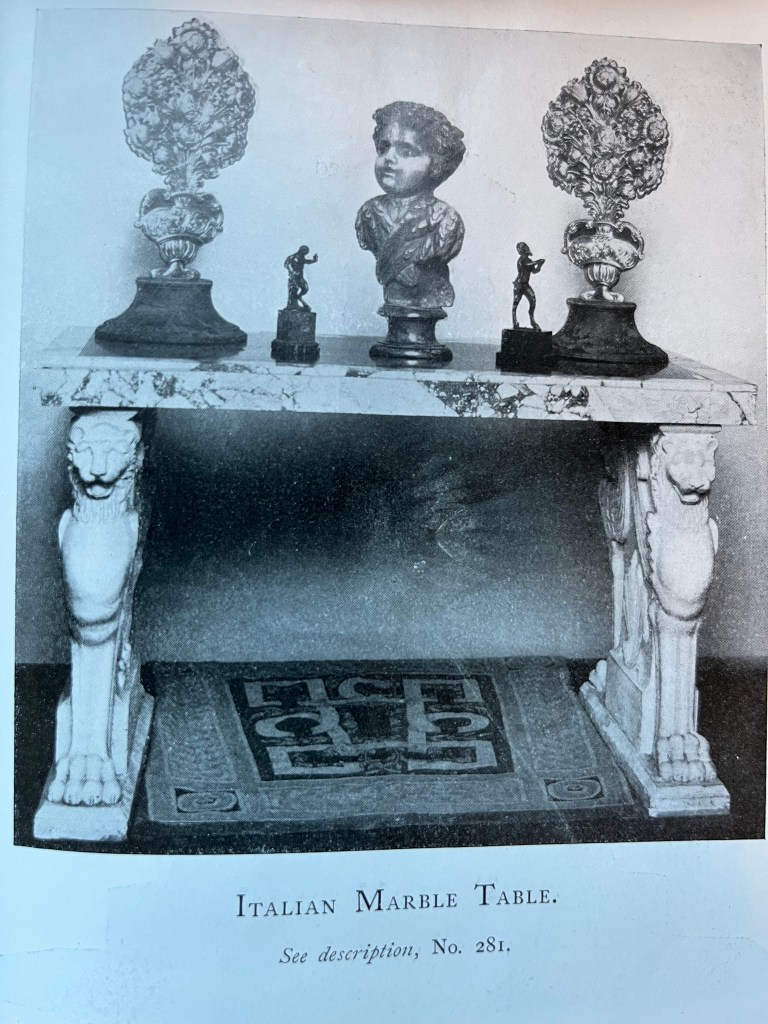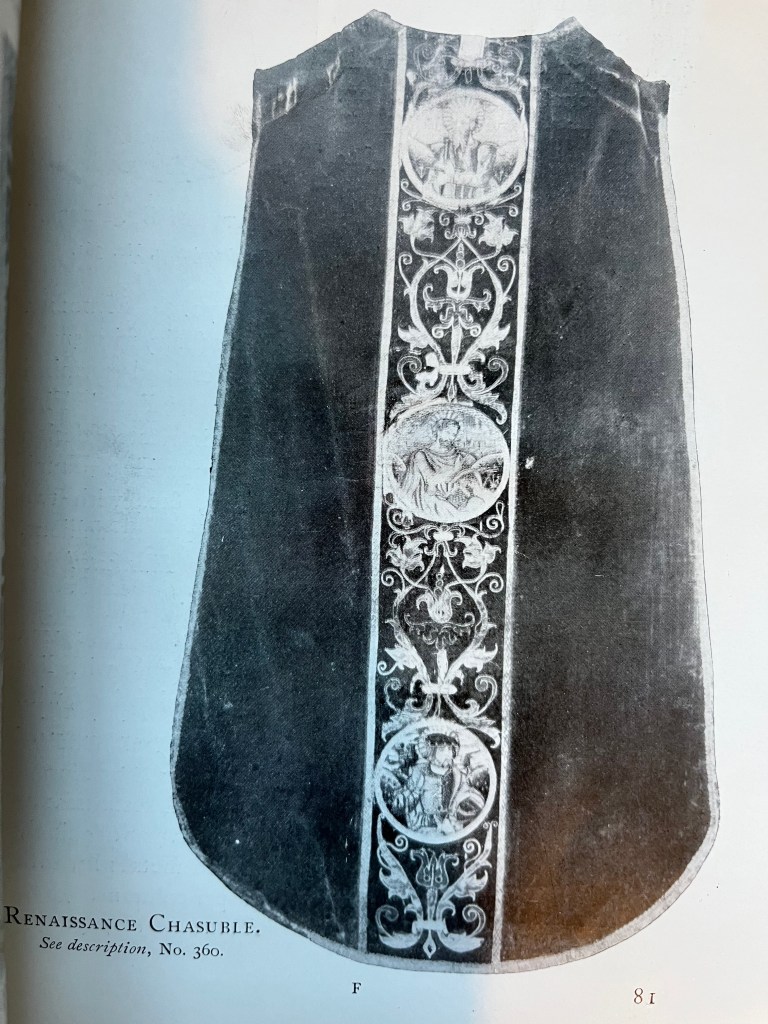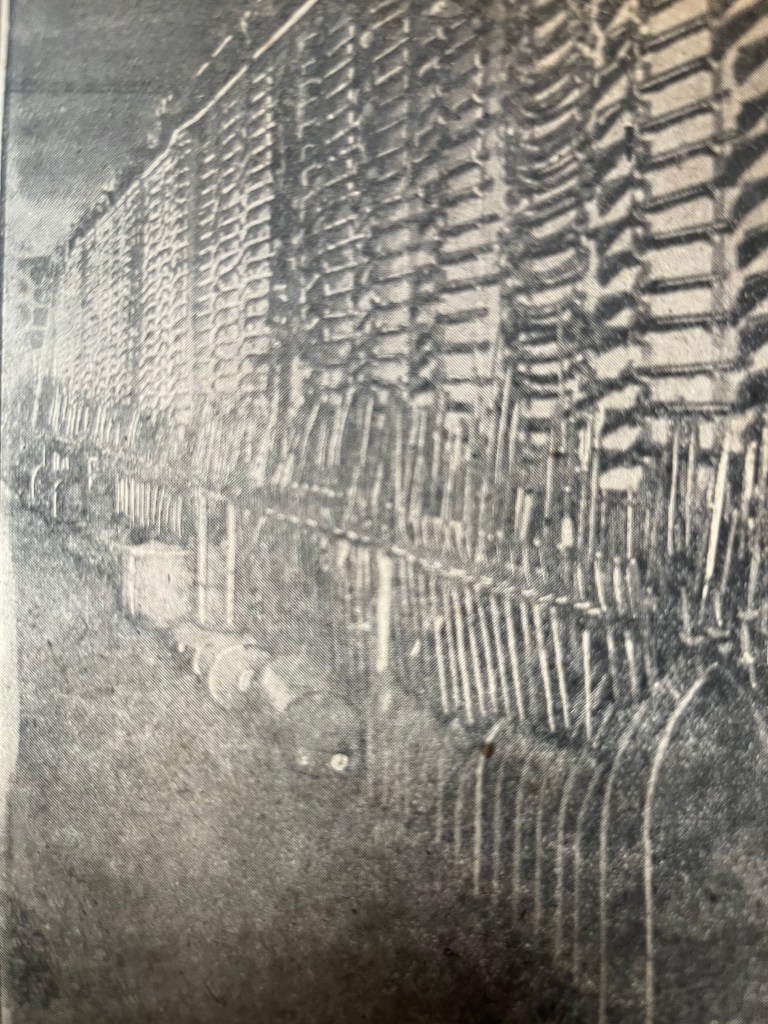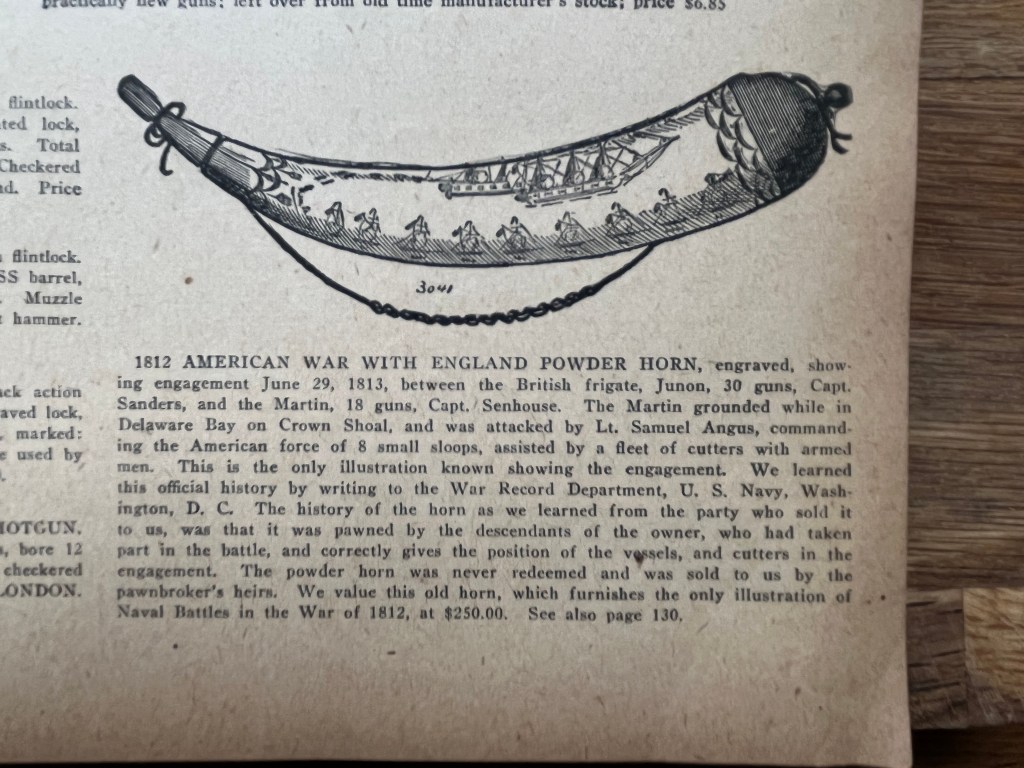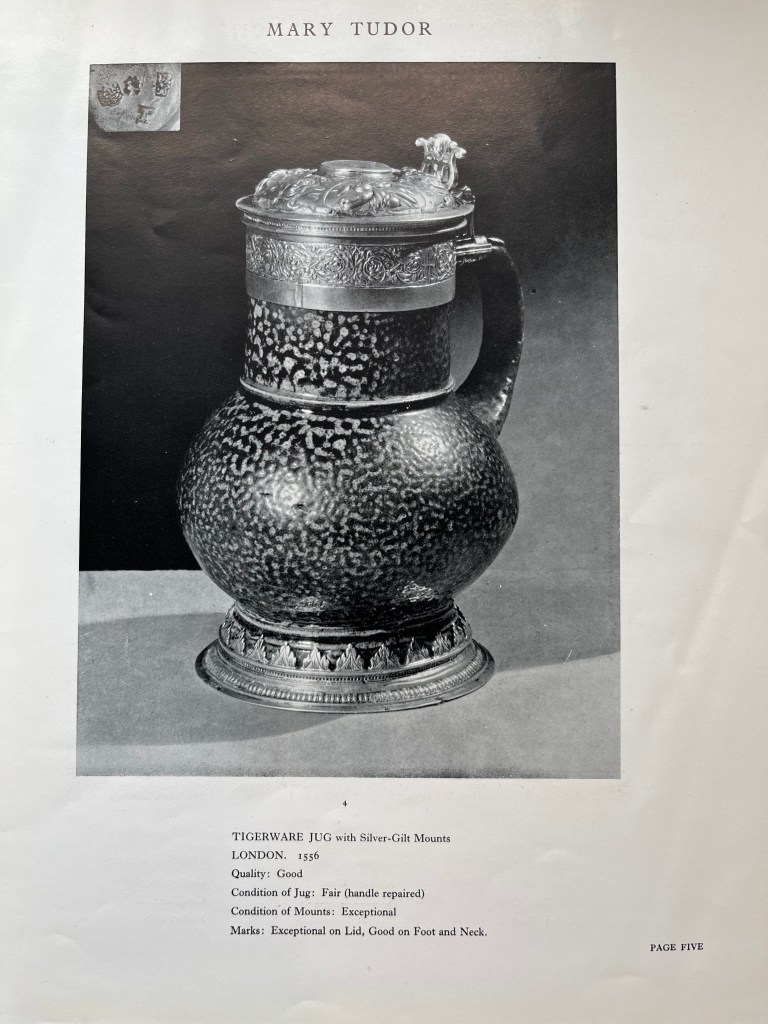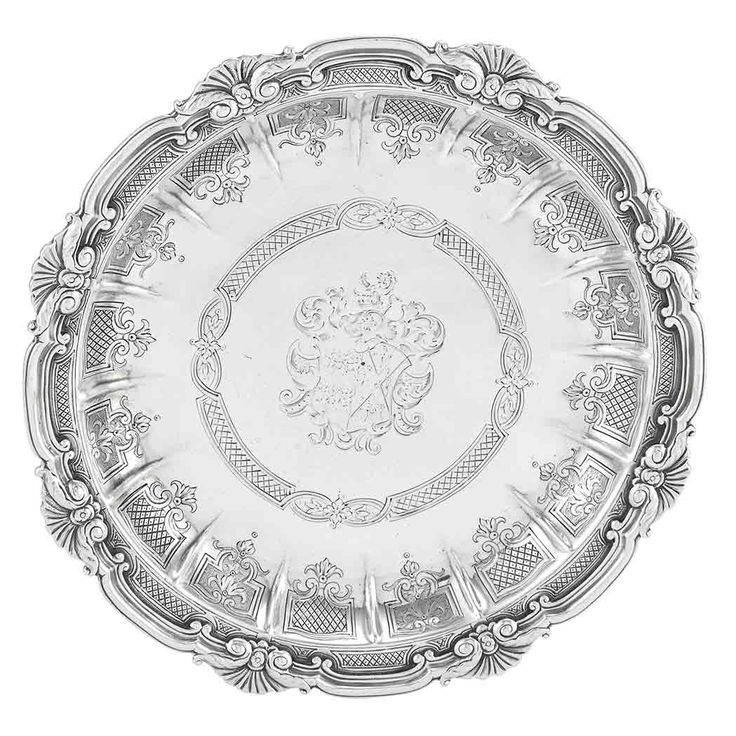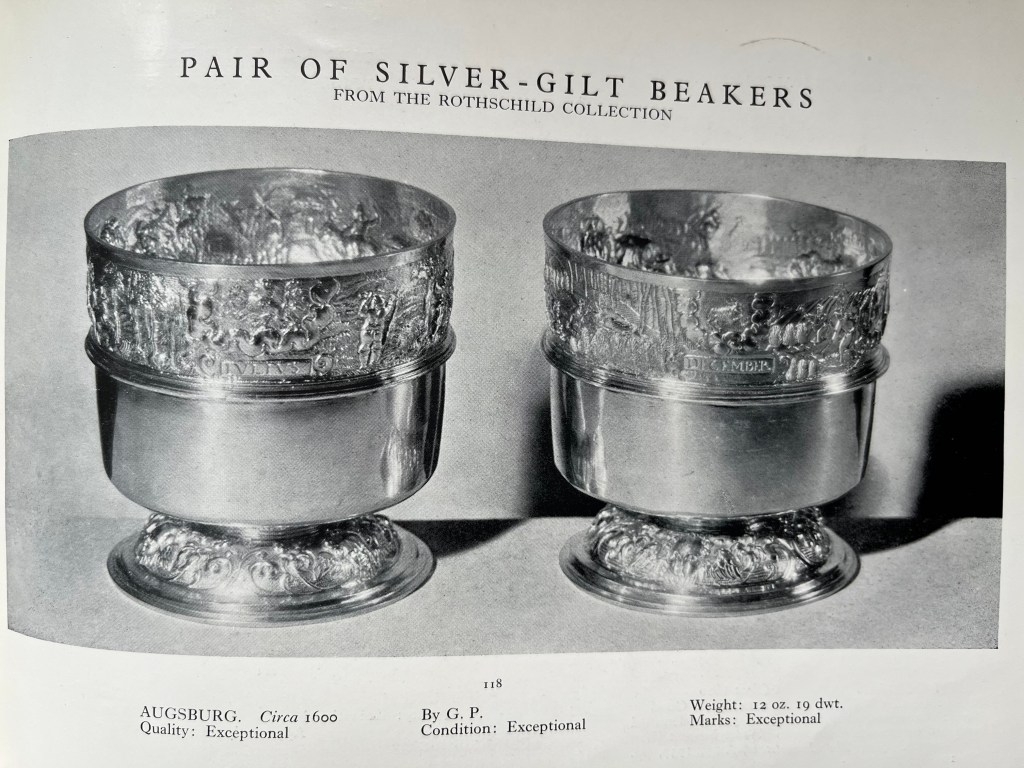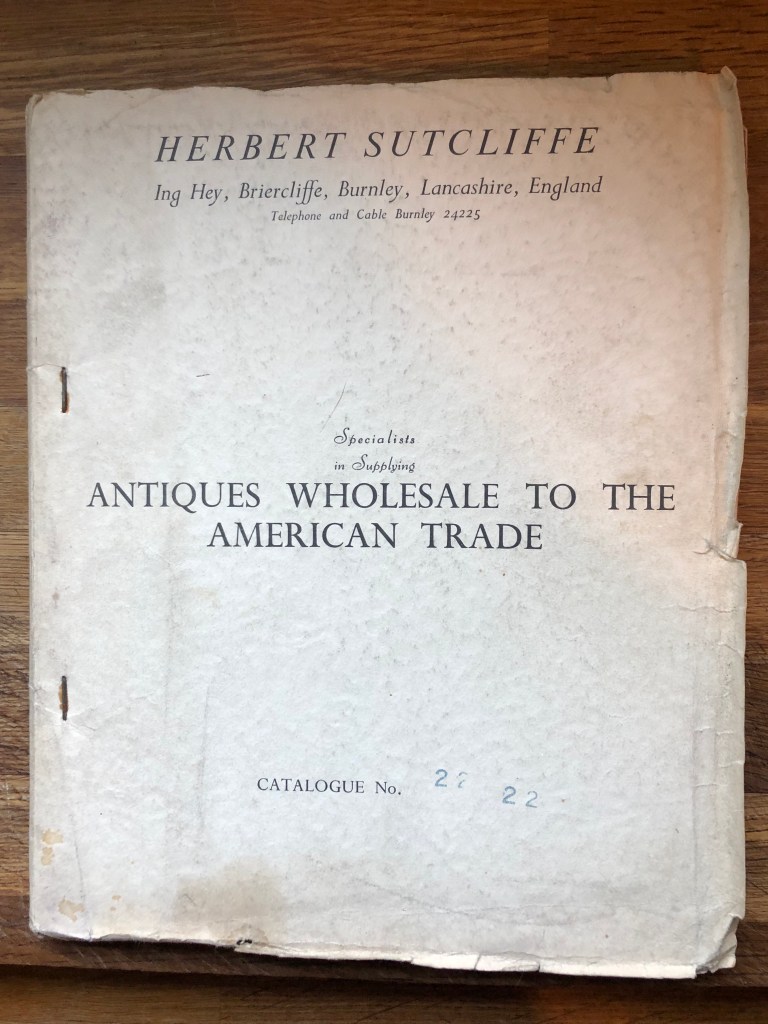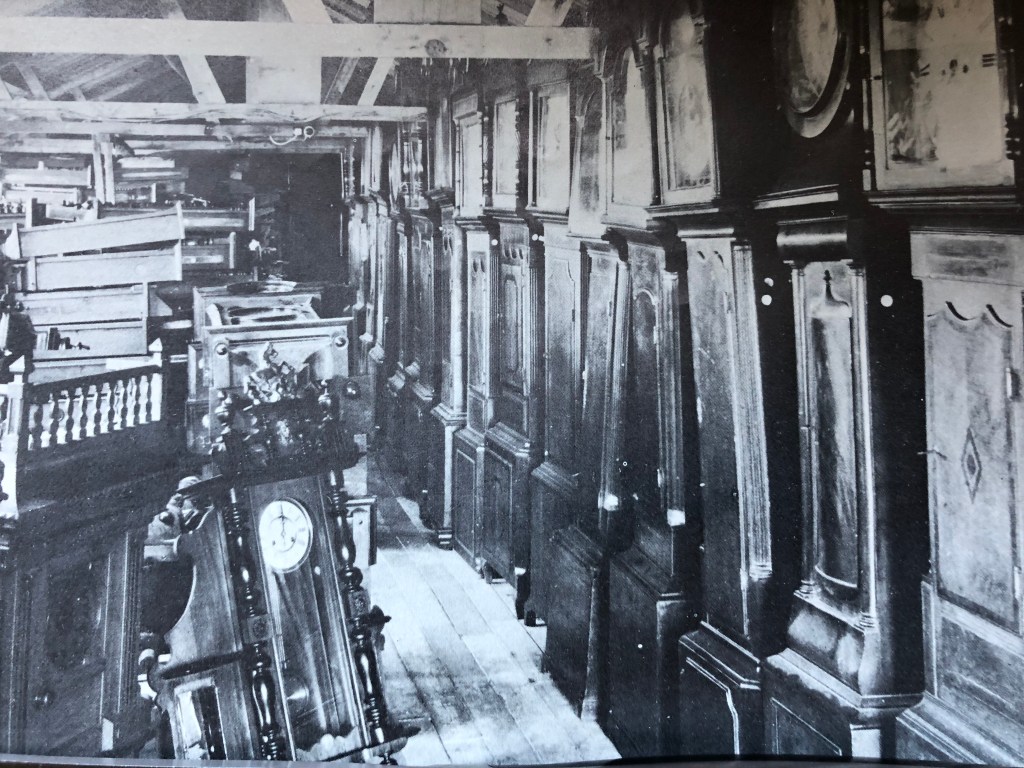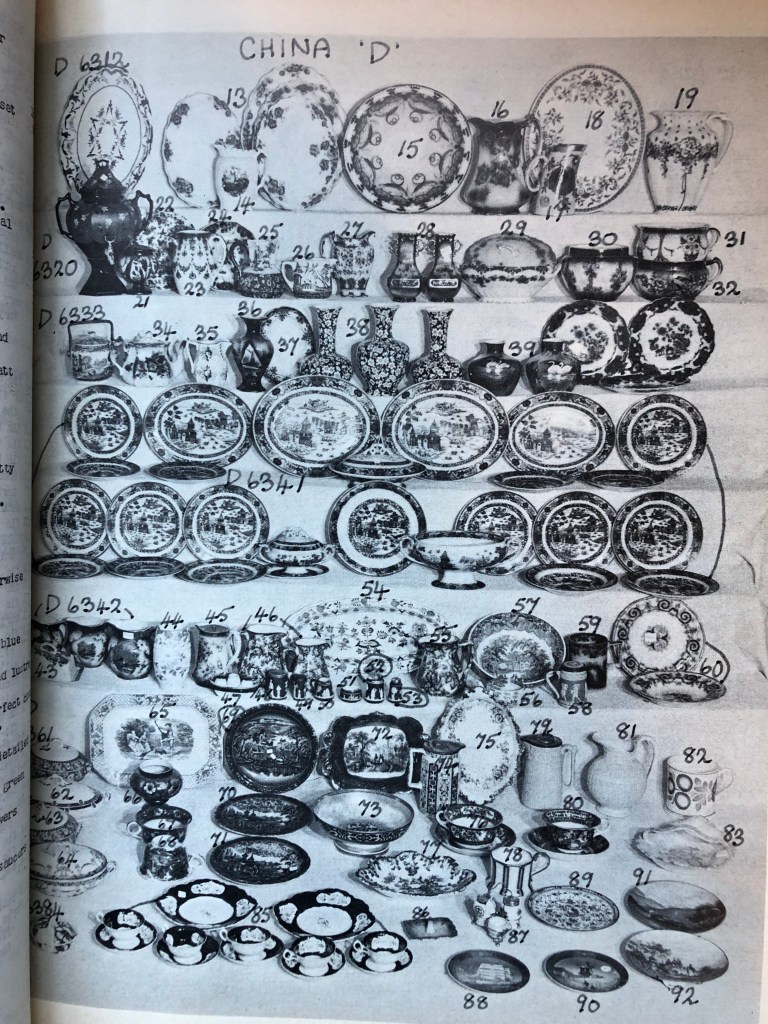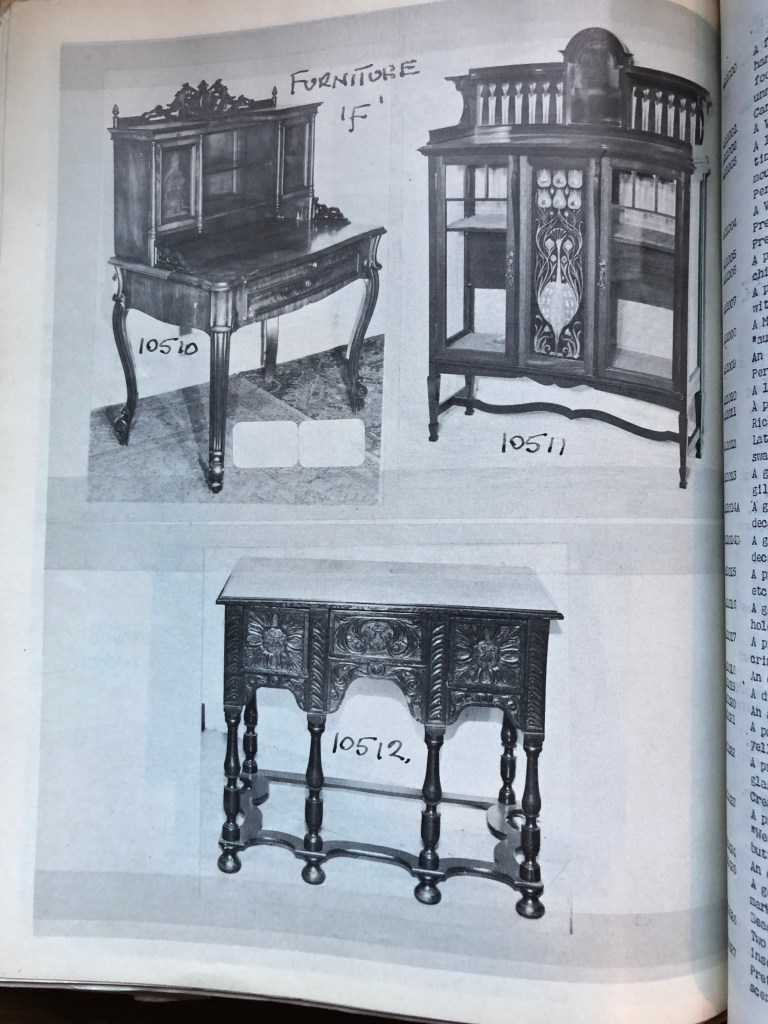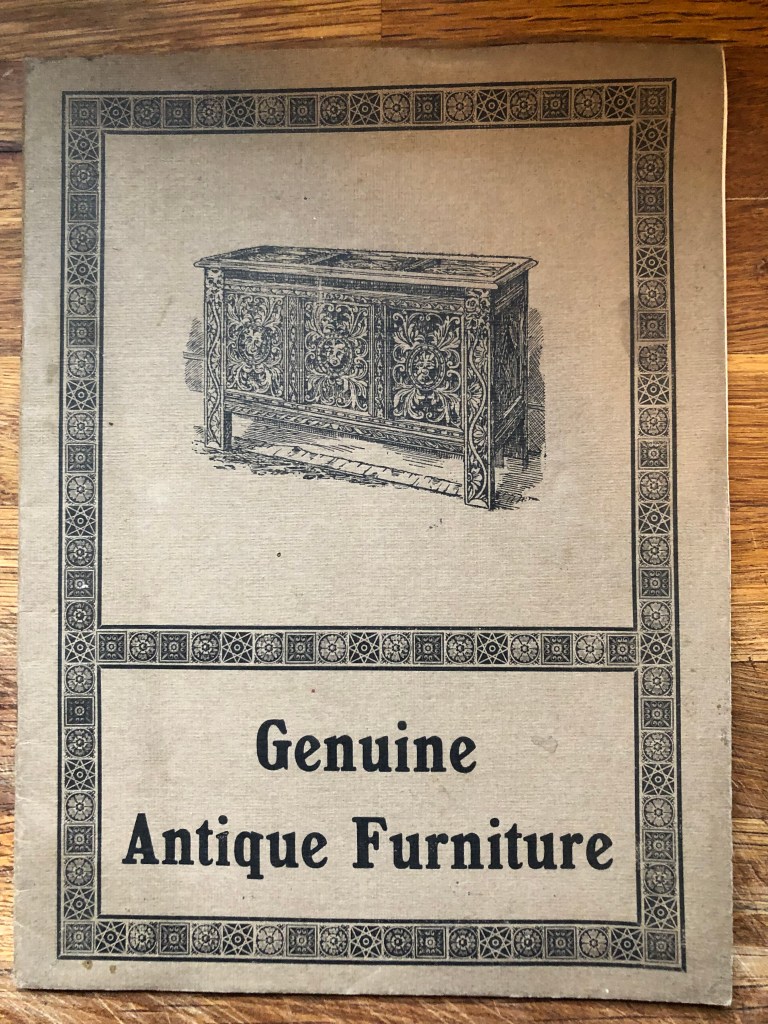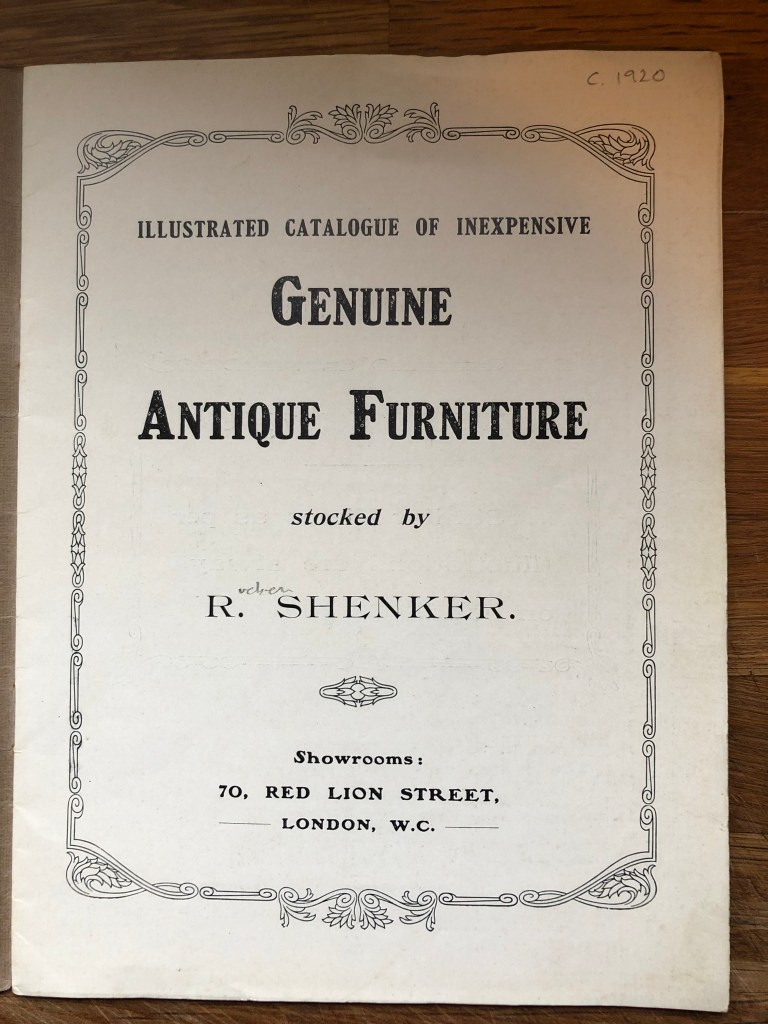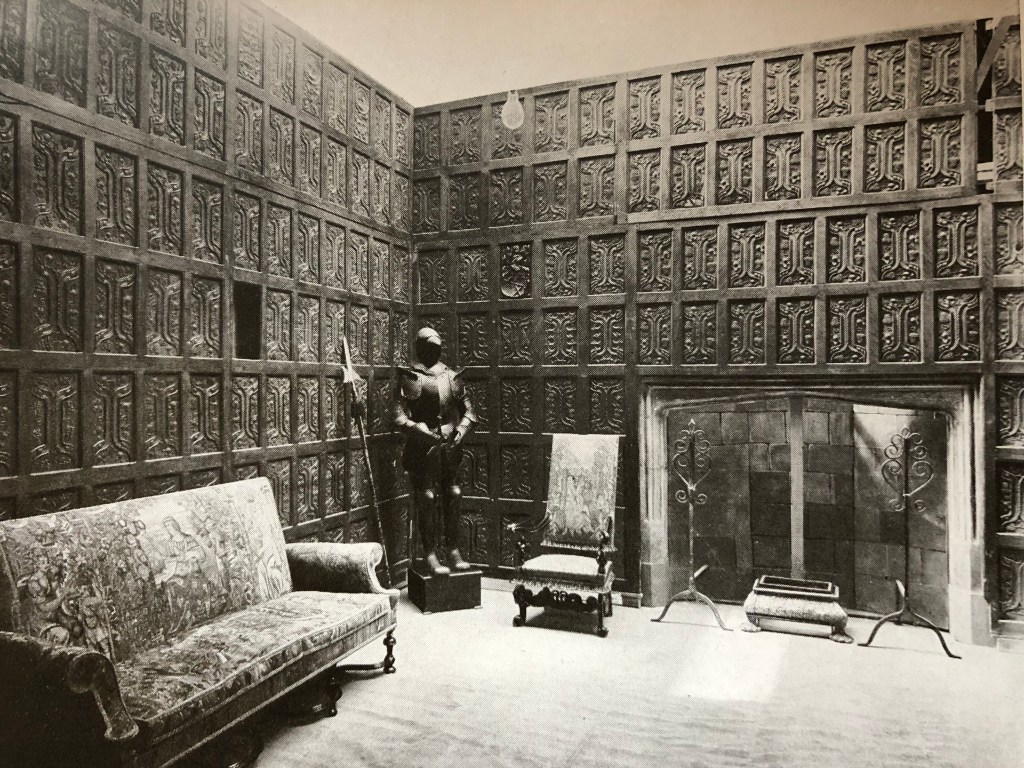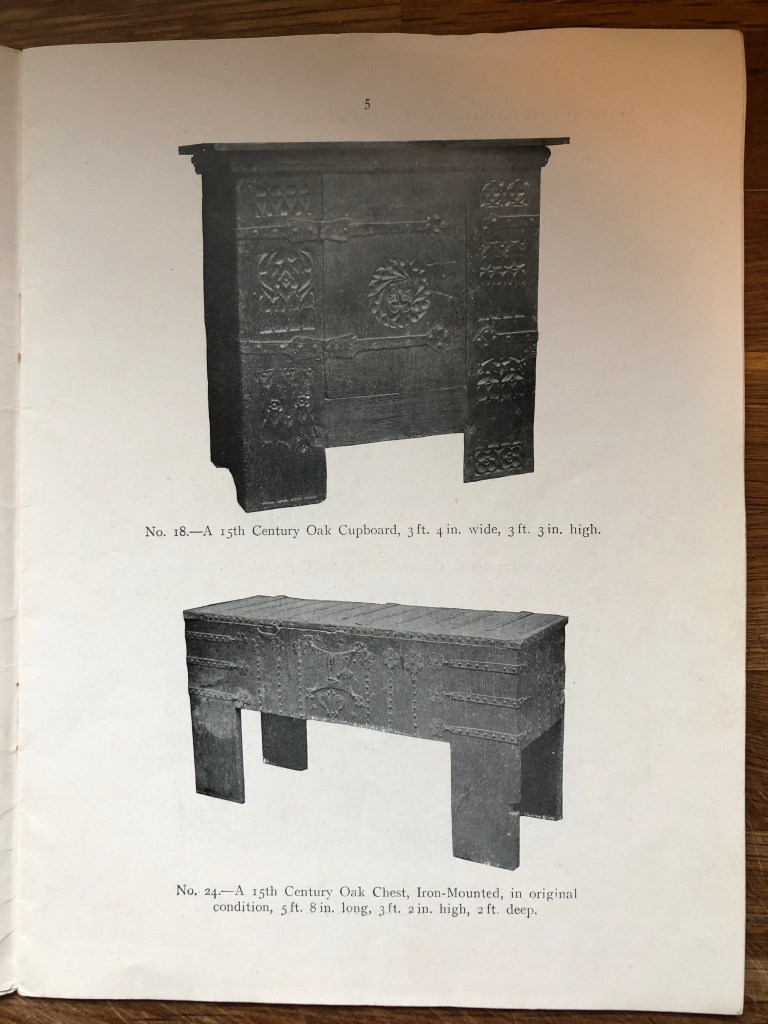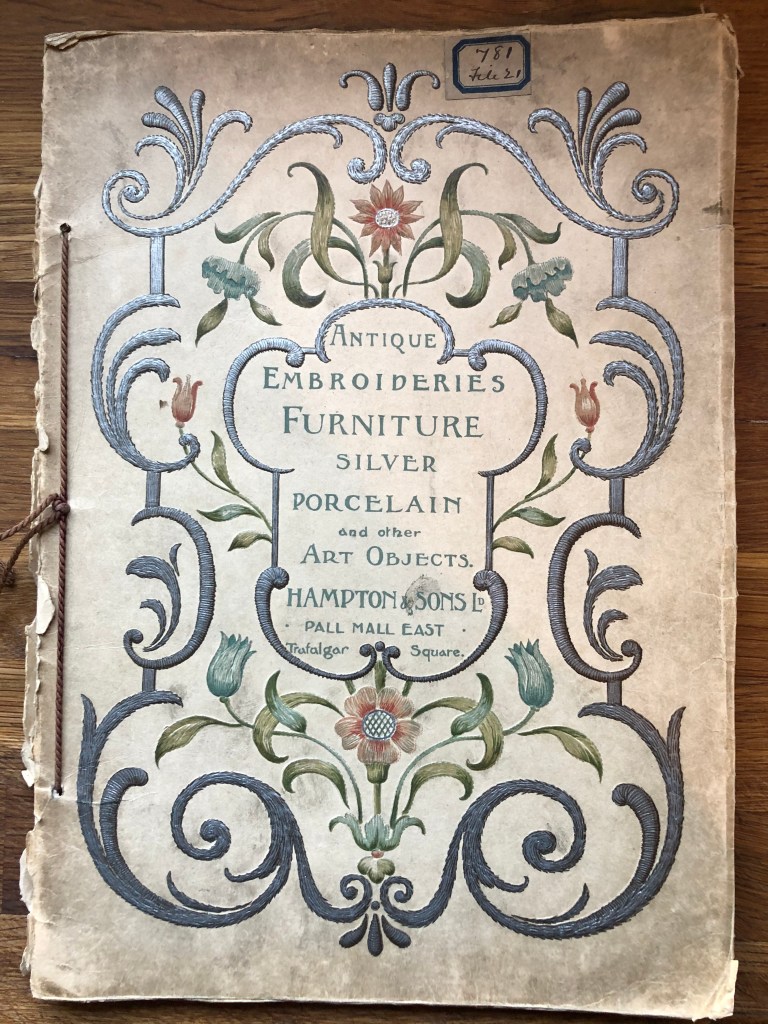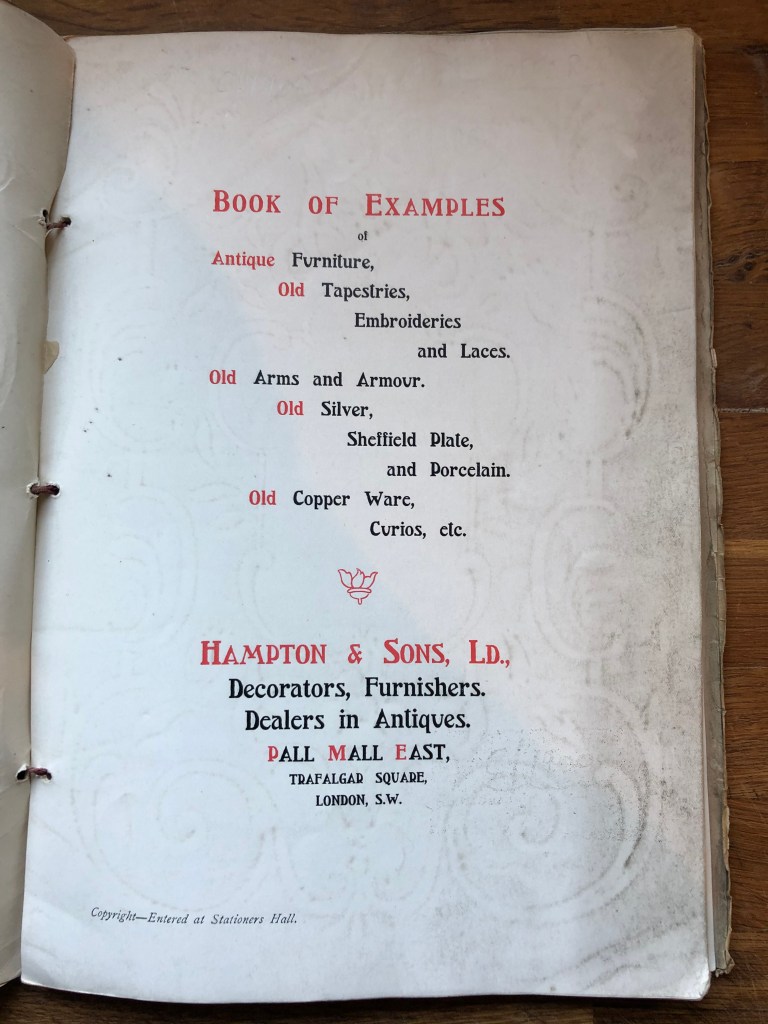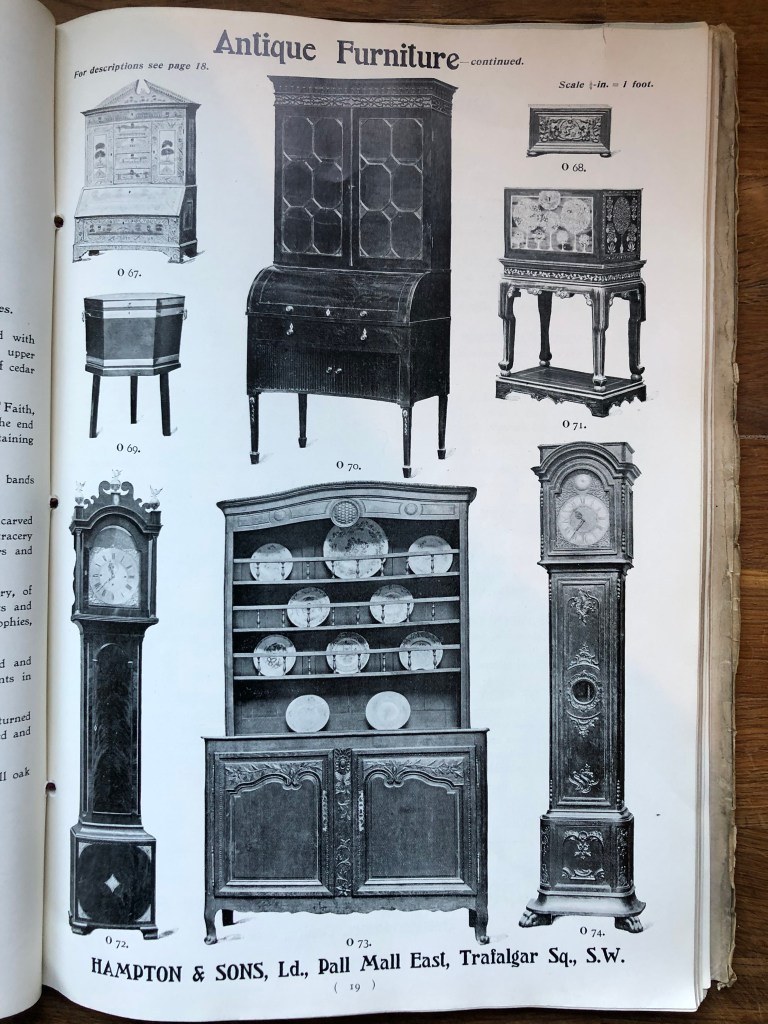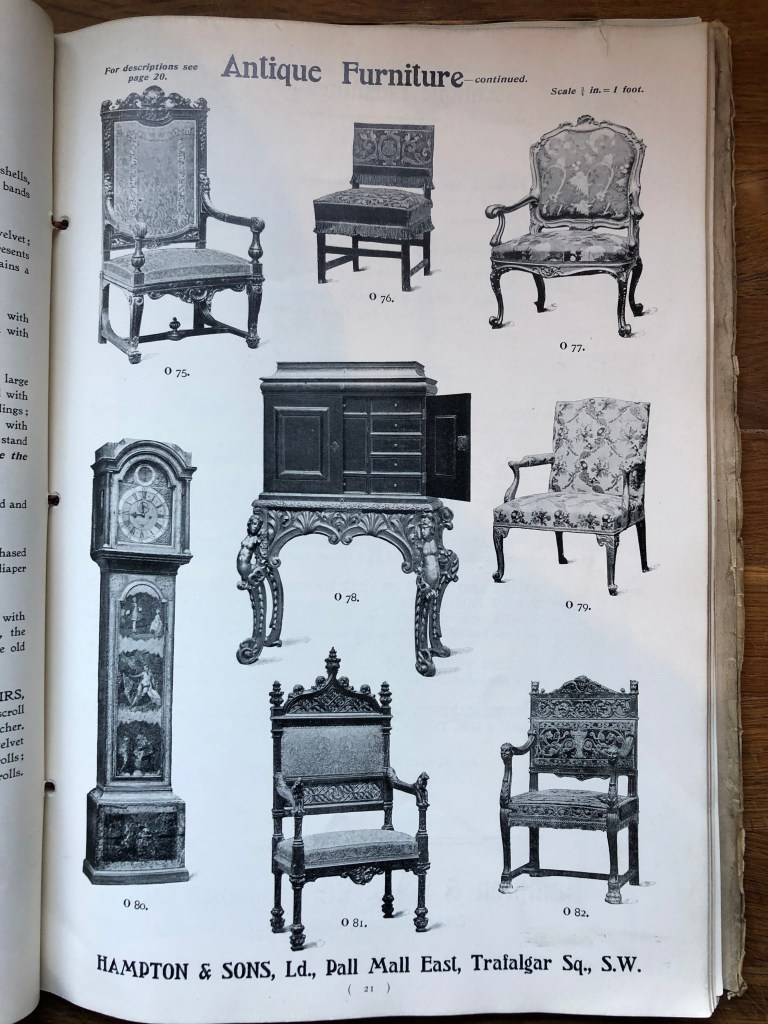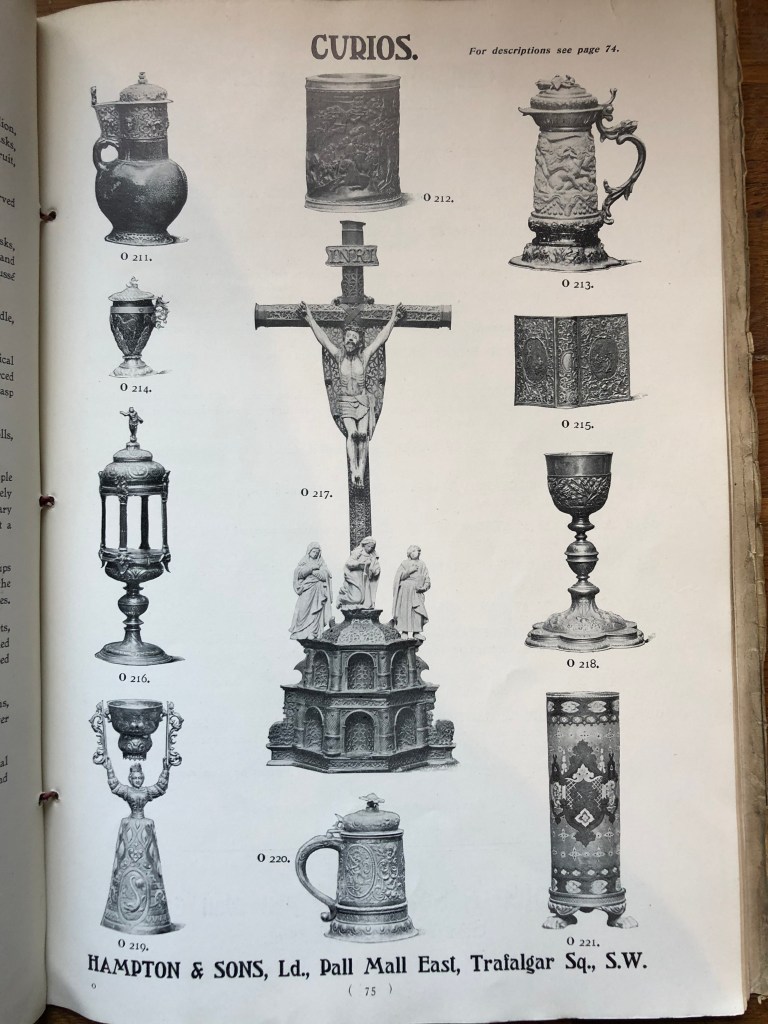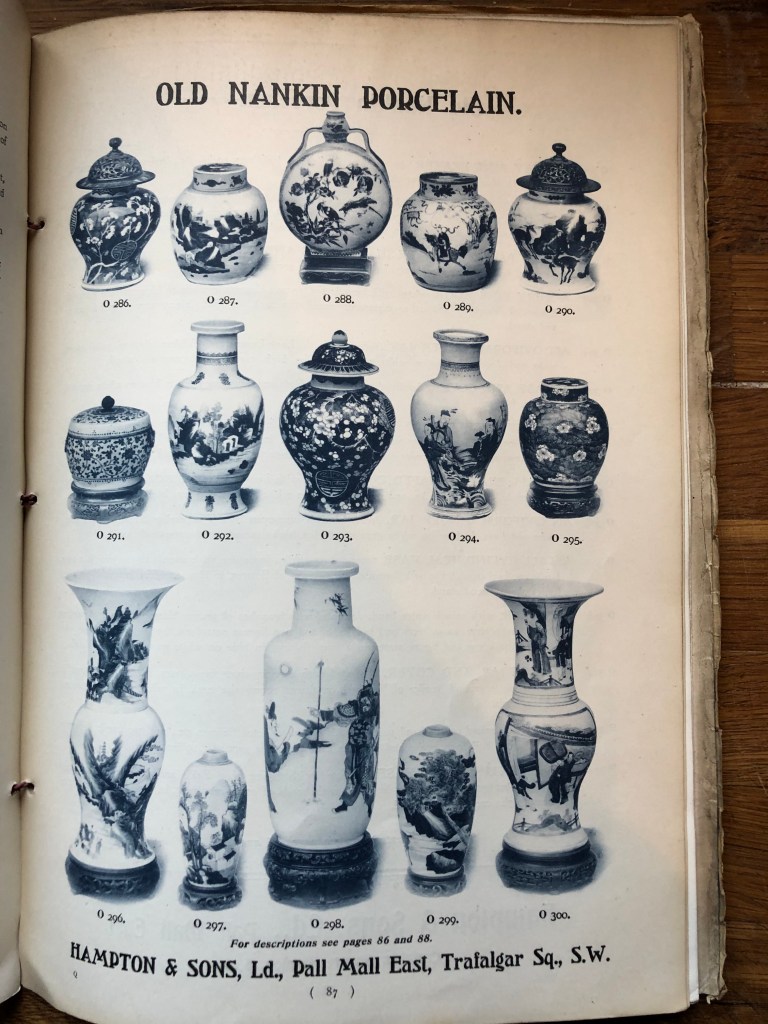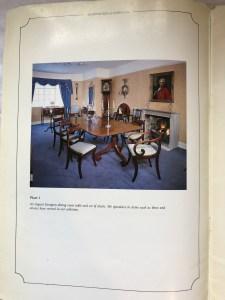Readers of the Antique Dealers’ blog will be aware that we have previously posted a couple blog entries on the antique dealer Samuel Richards (1859-1927) (see blog posts November 2018 & June 2014). Richards is well-known for producing charming and detailed lithographed catalogues of his stock of antiques, which he issued monthly (with a few exceptions) from the early 1890s until the period around the First World War. Richards’ catalogues are quite rare – there are a few copies at the Victoria & Albert Museum Art Library in London, bound together in a couple of volumes. We also have a small number of bound copies in the John Evan Bedford Library of Furniture History at the Brotherton Library Special Collections at the University of Leeds, thanks to the very generous bequest of the late John Bedford (1941-2019). The Brotherton Special Collections also has a couple more bound copies of Richards catalogues, very generously bought at auction (in Nottingham no less) in 2018 and donated by our friend and keen supporter of the antique dealer research project, Simon Myers, of the antique dealer R.N. Myers & Sons of Gargrave in North Yorkshire (thank you again Simon).
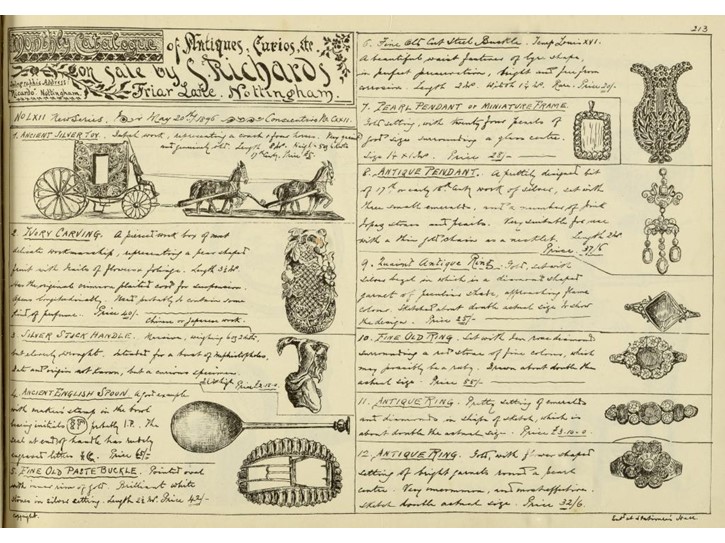
Richards drew the illustrations in the catalogues himself, producing them monthly and sending them out to collectors all over the UK – although Richards quite often felt the need to apologise for missing a month (due to sheer volume of work, he says) in some of the monthly catalogues.
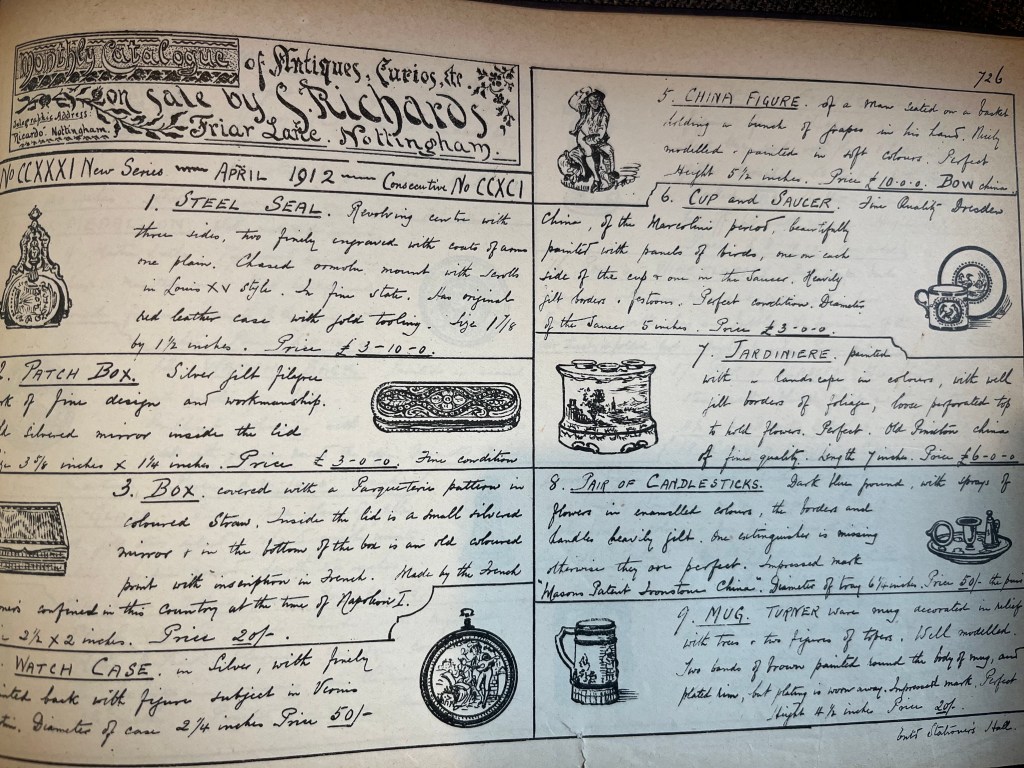
Whilst such lithographed catalogues produced by antique dealers were not unique to Richards (see blog post of the catalogues produced by A. W. & F. Little, of Bristol, in the same period – Blog Post February 2022), Richards seems to have been particularly prolific.
As a result of these fascinating catalogues, we have been doing more research on Samuel Richards over the past few months and have discovered new information about his activities an antique dealer in the period 1890s to 1920s. Richards was born in Nottingham in 1859, and died in Loughborough in 1927. He appears to have run his antique dealing business in Nottingham, but lived most of his life in Loughborough. The Census (1901) records Richards aged 42, a ‘dealer in antiquities’ (as antiques were often called at the time), living at 1 Park Street, Loughborough, with his wife Maud (aged 38), his son Arthur (aged 9), and daughters Winifred (aged 5) and Nora (aged 4), together with a servant, Fanny (aged 16). Richards appears to have owned or rented another property in Herrick Road in Loughborough at the same time. Richards antique shops were located in Nottingham, at 77 Houndgate and at The Old Friary, Friary Lane – he seems to have operated from both premises from the 1890s until his retirement from business in c.1919 – his son Arthur (1891-1976) appears to have worked with his father in the antique shops from about 1908, perhaps until his father’s retirement in c.1919. Richards shop at 77 Houndgate was crammed full of antiques (see photograph from 1892, below) typical of the material he illustrated in his monthly catalogues.

You can just make out the exterior appearance of Richards’ Houndgate antique shop in the title page of some of his catalogues – see below).
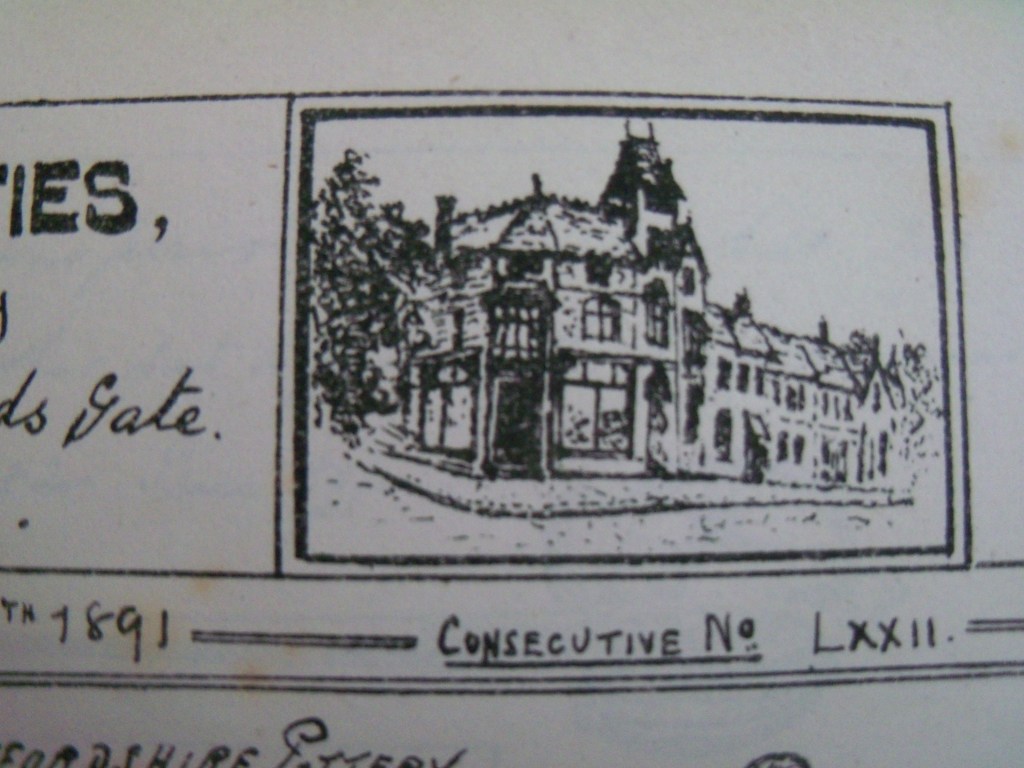
And as mentioned in the previous blog post in June 2014, the building that housed Richards’ Houndgate antique shop still exists (see below).

Richards’ other shop, The Old Friary in Friary Lane, Nottingham, was a much more famous building. He appears to have rented The Old Friary from the early 1890s until c.1919. The Old Friary was a 17th century building, rebuilt as part of a much earlier series of buildings that were part of Whitefriars Priory (built c.1276).

The Old Friary was also partly rebuilt in the 16th century and more famous for its associations with Dorothy Vernon (1544-1584) of Haddon Hall fame; Vernon is supposed to have lived at the Old Friary with her husband John Manners (1534-1611). In 1902 Charles Major published his famous romance novel ‘Dorothy Vernon of Haddon Hall’ which may have increased traffic to Richards’ shop. Certainly, such historic associations would have been of interest to an antiquary such as Richards and to his customers. The Old Friary was demolished in 1927. You can also just make out a photograph of The Old Friary in the title page of some of his catalogues of stock of antiques (see below).

We also have some exciting news about Samuel Richards – he is the focus of one of our Year of the Dealer Project digital trails (see Year of the Dealer Project) – at the Lady Lever Art Gallery at Port Sunlight, near Liverpool. Richards sold a large amount of ‘antique straw-work’ objects to Sir William Lever in 1915, one specimen of which we have included in the Year of the Dealer trail at the Lady Lever (see below). So, keep your eye out for the official launch of the Year of the Dealer trails this summer.
Mark


